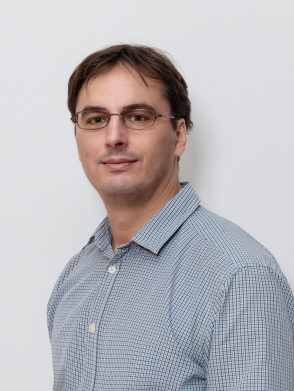Hungary may by the next to cross the boundaries of theory in quantum physics: things that text books formerly mentioned as mere curiosities are soon to become real experiments here and some of them have already been incorporated into the curriculum. Better imaging, quantum computers for so far unsolvable mathematical problems and a boom of hyperloop may come round the corner. What are Hungarian researchers working on, what the money is needed for? Anyway, what is quantum physics all about?

Péter Domokos, physician and research professor, head of the National Quantum Technology Programme
Black or white, yes or no. We like clear and intelligible choices between two things. Something is either there or not. But with the evolution of science, it turned out that our world is much more complex and the point where traditional physics just shrugs and waves dismissively that’s where the realm of quantum physics begins.
One of the most widely known thought experiments is that of Schrödinger’s unlucky cat: a cat is penned up in a box with a radioactive substance in which an atom will decay in the course of an hour or, with equal probability, will not. If it does decay, a radiometer detects it and releases a hammer that shatters a bottle containing poison (hydrocyanic acid) which kills the cat. The main point of this theory is that as long as we do not look into the box we cannot be sure whether the cat is still alive or dead. So, as we do not see it, we can suppose both and we make sure only when the box is opened. But what is it good for?
Although the cat’s case is purely theoretical and it seems unrealistic that something is this and that at the same time, we cannot say its mere fiction – let’s just think of light, which is a wave and a particle at the same time. And if it is so, then we can figure out something from that too.
Hungary opens up the throttle
Dr Péter Domokos, one of the most renowned experts of Hungarian quantum physics is the leader of the research consortium set up for implementing the Quantum Technology Programme of Hungary in the next four years. Although the discipline has hardly a hundred years of history, it has many major achievements and not only on the level of theories. Quantum sciences may bring considerable progress in many fields from communication to measurements.
The consortium has four industrial partners: Bonn Hungary Electronics engaged in microwave transmission; Ericsson developing encrypting solutions; Nokia Bell having an artificial intelligence research centre and looking into the type of software to be developed for quantum computer hardwares; and Femtonics a manufacturer of medical microscopes.
“Basically, what we have been testing within the realm of theory now we can put into practice with this programme”, summarises briefly Professor Domokos. Thanks to the National Quantum Technology Programme funded from the National Research, Development and Innovation Fund, they can set up five new laboratories and modernise two others. “Let me do a quick mental math: the cost of a well-equipped laboratory starts at around HUF 150-200 million but obviously the sky is the limit”, he adds.
An optical laboratory, for example, needs room no more than 20 square metres while so-called table-top experiments need just as much as their name suggest: a table top. “Optical experiments, especially, require a number of small tools which may cost a lot if we consider that they become obsolete. But it is still better than having a device worth HUF 200 million, which becomes outdated within a few years and then it will be hardly used for experiments. Like our photon detection device: if it breaks down and a module needs to be replaced, it costs only a couple of millions of HUF. If we were hard up we could even build the lasers used for the experiments”, he says.
Through this programme, Hungary can catch up with other countries in certain areas while in others it could become a leader in the region. “In the field of quantum cryptography, basic research in electromagnetics is no longer needed. It can be put in the academic curriculum so that electrical engineering students can learn basic operations and relying on this knowledge they can make their own developments or even cooperate with industrial partners. So, this cryptographic part is rather a technical, mathematical thing now.”
According to Péter Domokos, the programme has the potential to develop a solution with which we outpace other players in the region. “Traditional telecommunication infrastructure – in the light of our current knowledge – does not allow for quantum communication because signal is lost in a couple of hundreds of metres. We should try to send photons with such frequency of light that can work also on the existing, traditional networks”, he says. That’s one of the development goals at Wigner Research Centre for Physics of HAS (Hungarian Academy of Sciences): finding impurities on nanocrystals that could be used for such purposes.
They may solve the Travelling Salesman Problem
Obviously, physicists may bring innovations not only in the field of communication but, for instance, in medical imaging techniques. “Quantum technology may bring about considerable improvements, for example in magnetic resonance measurements such as MRI. Traditional technique gets signals from several sources, the so-called spin resonance, but its spatial resolution is not very good” – in other words, the image is not easy to interpret. Another technique scans magnetic resonance with laser allowing for converting the change inside the spin to an optical signal instead of converting the signal of the core spin and, as a result, we can have a clearer image. “This could also be used in brain research. By the end of the four-year programme, it is foreseen to be tested on biological samples during the last year and, what is more, such technique is not yet used on this market, so we can be the first and the market leader”, remarks Péter Domokos.
Research groups involved in this programme have already made their mark in Momentum (Lendület) Programme of HAS or earned the ERC’s (European Research Council) label of excellence. “They meet the European standard and we can remedy major deficiencies in the coming years considering that our experimental developments were not so strong before. Now emphasis is shifted from theoretical to empirical research. It entails a certain level of risk but if we succeed, we can achieve a position in Europe that is proportional to our size. We are not going to be the strongest ones, considering that the neighbouring Austria is unmatched even on a global scale, for example, in quantum communication. But we have a cooperation with them too,” says Professor Domokos.
Although back in the 90s, there was a great deal of scepticism even among researches towards the concept of the usability of quantum computers, in the past years big companies like Google and IBM built their quantum computers, so there seems to be a chance for a breakthrough. It does not mean that these machines will replace personal computers, yet their practical benefits might be considerable.
“Mathematical operations that used to be impossible to perform with traditional computers can now be executed but it requires the manufacturing of specific hardware (electrical circuits)”, says Péter Domokos. Such computers are now capable of solving the so-called Travelling Salesman Problem: salesmen have to find the shortest and most cost-efficient route to reach each destination city and then return home. The problem is that computers used today cannot calculate it if the network of cities is too large. Budapest University of Technology and Economics (BME) has two groups now that are working on electrical circuits likely to be capable of solving this problem.
We can understand how superconductors work
Quantum simulation relies on a similar concept but the problem is that what the hardware can solve is of interest primarily to physicists but it may certainly infiltrate into everyday life later on. “For example, we do not know what turns a material into a superconductor; we are not able to desig one just yet. The model that could describe this cannot be created through traditional techniques. Now, we will have the opportunity to test in practice any potential model we outline. Because we can build a model from atoms, where not electrons are moving in an ion grid but atoms are bouncing in a laser-created light grid. With this we can simulate the movement of electrons.”
Superconductors are used, for example, in building hyperloops. Finding a method for their artificial production may give developments a great impetus. But practical implementation does not end here: one of the great findings of quantum mechanics was that even material is a sort of wave and as such it interferes and this property can be exploited: we can, for example, locate underground pools of raw materials ba means of atom interferometers.
Summer course for the youth?
The programme not only creates opportunities for practical developments but also makes Hungary a much more attractive scientific hub. Péter Domokos says they do not want to prevent students from going abroad because the knowledge they can acquire outside is extremely valuable. But they urge to ensure high standards of scientific environment for those returning so that they feel worth continuing their research in Hungary. “We would like to offer unconventional courses that could be attended during the summer. As I see students going to study abroad are highly motivated and want to prove their knowledge also when they return home for the holidays as studying abroad is a huge financial burden on their families”, he says.
Owing to these developments not only scientific activities are placed on the next level but the significance of our role within the region will also be strengthened and Hungary will have much better chances in applying for EU funding at the calls, such as the large-scale Quantum Technologies Flagship programme in 2018.
.
 |
 |
- Wigner Research Centre for Physics of the Hungarian Academy of Sciences
- BHE Bonn Hungary Electronics Ltd
- Budapest University of Technology and Economics (BME)
- Eötvös Loránd University (ELTE)
- Ericsson Hungary Communication Systems Ltd
- Femtonics Research and Development Ltd
- Nokia Solutions and Networks Ltd
Further information:
EUR 11 million support to the National Quantum Technology Programme
Quantum Europe 2017: Towards the Quantum Technology Flagship






